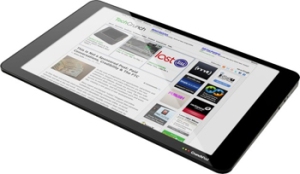It happened so fast. The change. One day, photojournalists were just doing their thing. Shooting daily photos for their newspapers. Maybe even an odd photo story or two. A lucky day was getting a page or a double truck on Sunday to showcase all their hard work.
Video at newspapers was out there on the fringes. A few staffers braved the online world and embraced a new way to tell a visual story. Except this time, it was on the World Wide Web. No space restrictions here. Most traditional still shooters shrugged their shoulders and continued on with the status quo. Video cameras were for “TV types,” they said.
Then the layoffs hit hard. In 2009 and onwards, photo departments at many newspapers were gutted. Hundreds of staff photographers were tossed onto the streets to fend for themselves. To freelance.
In the midst of all this chaos, a new type of still camera was quietly released by Canon. The 5D Mark II had a little secret– it could shoot kick-ass HD video. A few brave photojournalists used the new technology to produce stunning imagery. Images unlike anything ever seen in the video camera world. Shallow depth-of-field shots and cinematic looks that mimicked film dropped many jaws along the way. The smart ones ran with it. Reinvented themselves and in doing so, reinvented the genre of documentary filmmaking. Overnight the doc film industry changed. Shooting with Film stock was done. Former still photojournalists, once resistant to shooting video, now embraced it.
The commercial still photography market tanked as a “billion of photojournalists” raised their iPhones and posted their snaps on Flickr.
Because the DSLR camera was familiar, still photojournalists could buy in without judgment. The taint of video, hidden in a tiny package of a pro DSLR camera gave courage to those that once scoffed at the idea. It did not matter that the DSLR was much harder to shoot with than a traditional video camera. What did they know? They had never shot with a Sony or Panasonic video camera with built-in stabilization and pro audio inputs.
The aftermarket kicked in with a plethora of accessories to make the 5D Mark II easier to focus and improve the bad audio the camera outputted.
Soon the former photojournalists were now calling themselves filmmakers. The old ideas of us (still) vs. them (TV) dissipated. “Us” became “them,” but in a different way.
Video storytelling changed. The entry point into the documentary film world flattened. An army of new filmmakers, not confined by the limitations and cost of film, were unleashed. Stories, some short, some long (most too long,) gave rise to publishing platforms like YouTube and Vimeo. No longer did you need a TV to showcase your vision. Shoot and edit your story yourself, then post it to the Web. Maybe even enter a film festival or two.
Former photojournalists, the ones newspapers turned their backs on, were the most creative with the new DSLR video medium. They brought a keen sense of composition, moment and storytelling to the table. But sometimes that was not enough. They needed to understand that great imagery did not a great story make. Each failure was a learning opportunity.
The unfortunate ones were the Nikon shooters. The Nikon D90 was the first DSLR to have video capabilities. But Nikon took a nap after that release. Canon became the de facto standard for DSLR video. The release of the Nikon D800 and D4 played catch up and now a lost generation of Nikon users are joining the fray of filmmaking.
I sit here now stewing, one of the first still photojournalists that embraced digital video storytelling at a newspaper. I was a change agent; embracing the idea that video was an important path to enhancing our online content. In those early days of 2004, our website was mostly text-based with a few postage stamp-sized photos sprinkled about. I evangelized, I shared, and I taught video sequencing to anyone who wanted to learn. I produced hundreds of video and multimedia stories. I even survived 11 rounds of layoffs at my newspaper. But now I feel like the old man talking about the good old days. Many of my photojournalists friends who left newspapers unwillingly are doing incredible documentary video stories now.
Video storytelling is hard. It takes commitment to keep learning. To keep pushing the boundaries of what is possible with the tools available.
In the blink of an eye, things change. It comes down to how you respond to that change. Give up and you stagnate. Embrace and you risk failure. Fear is the great equalizer. I keep telling myself “no fear, no fear.”
I really love video storytelling. Though now I feel the cool kids have taken the torch and somehow passed me by. I tell myself I still have knowledge and experience on my side.
Inside me is a storytelling machine waiting to be unleashed. My Nikon D4 beckons. The world is full of stories. The only one that keeps me from telling them is fear. No fear. No fear. No fear.







